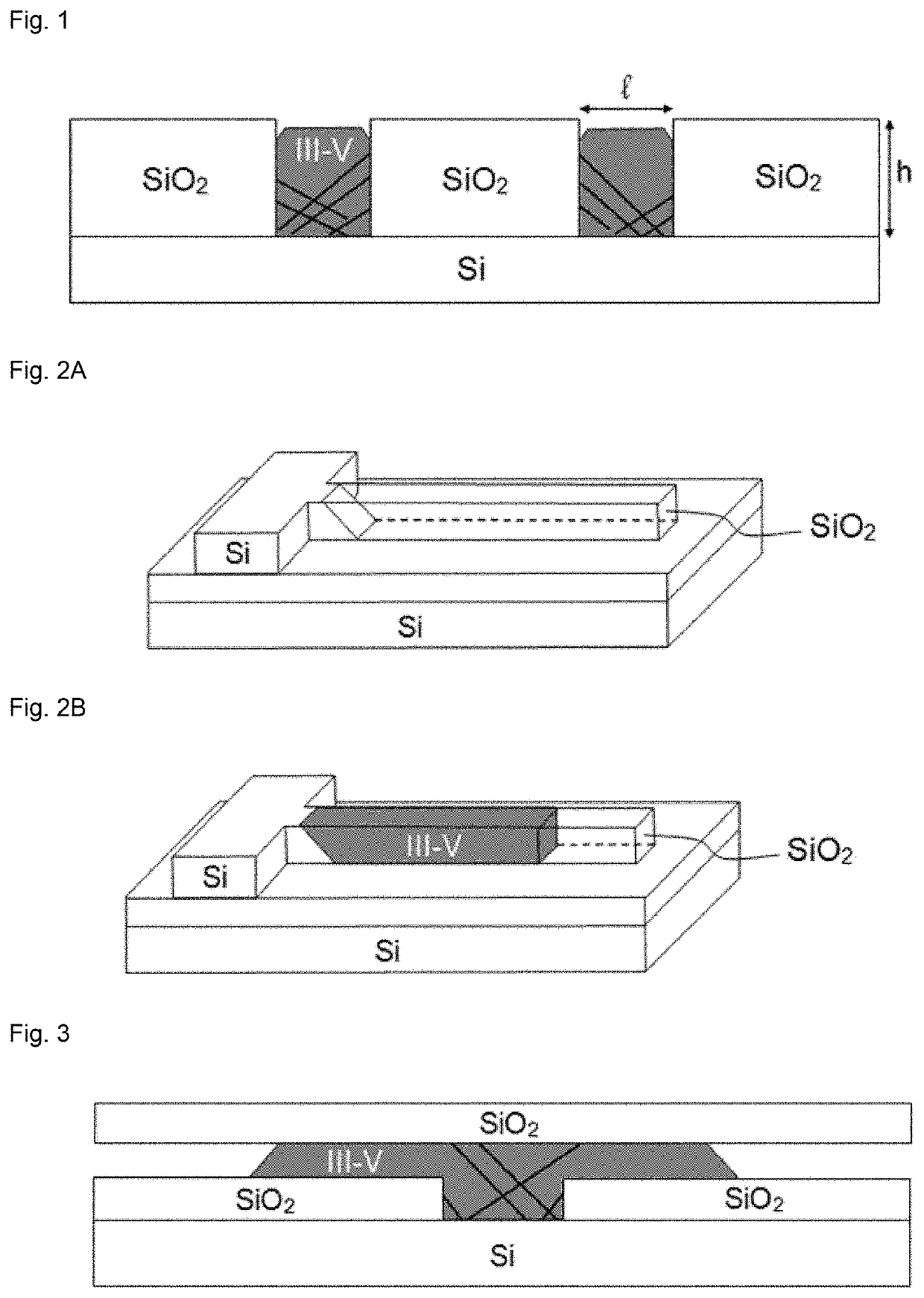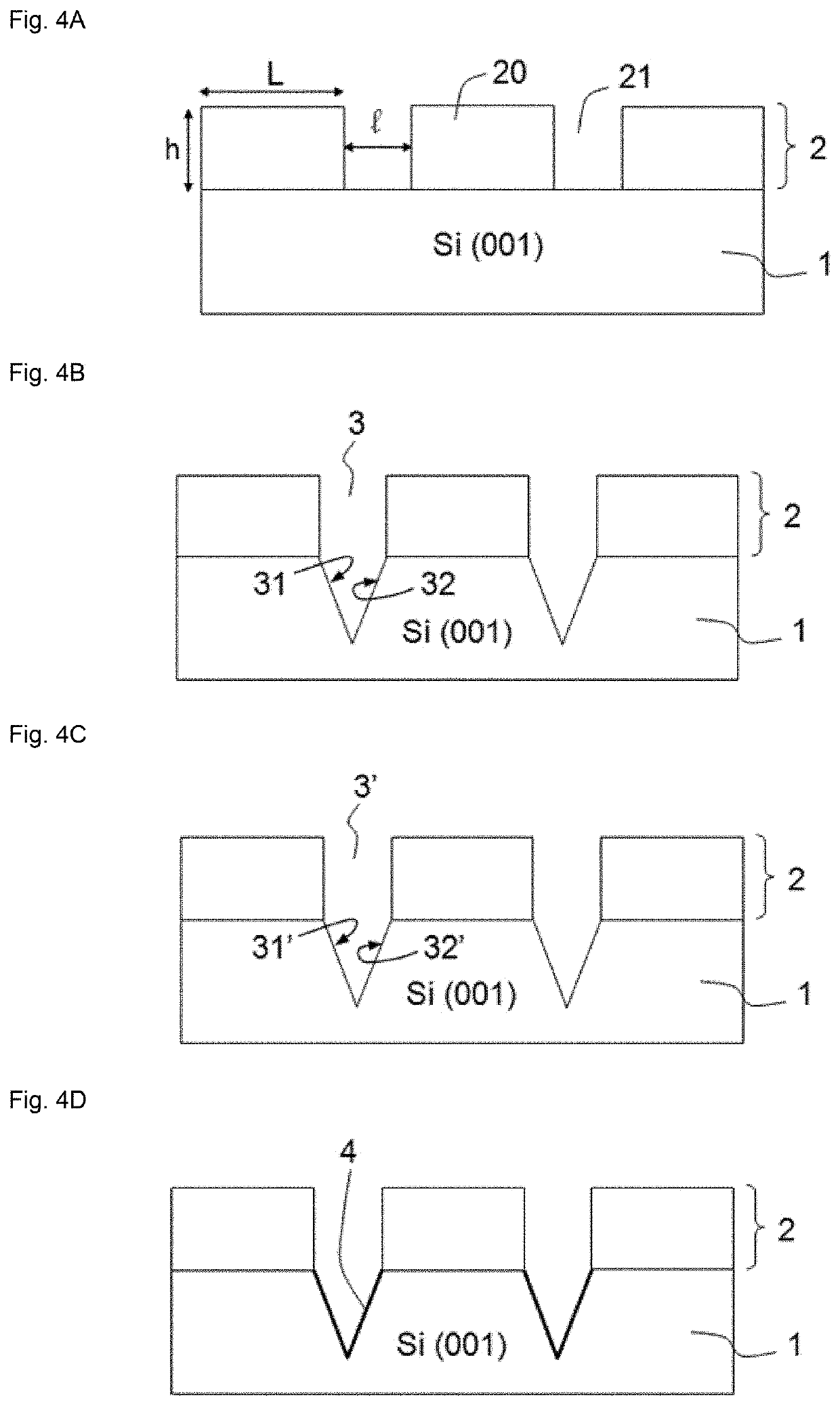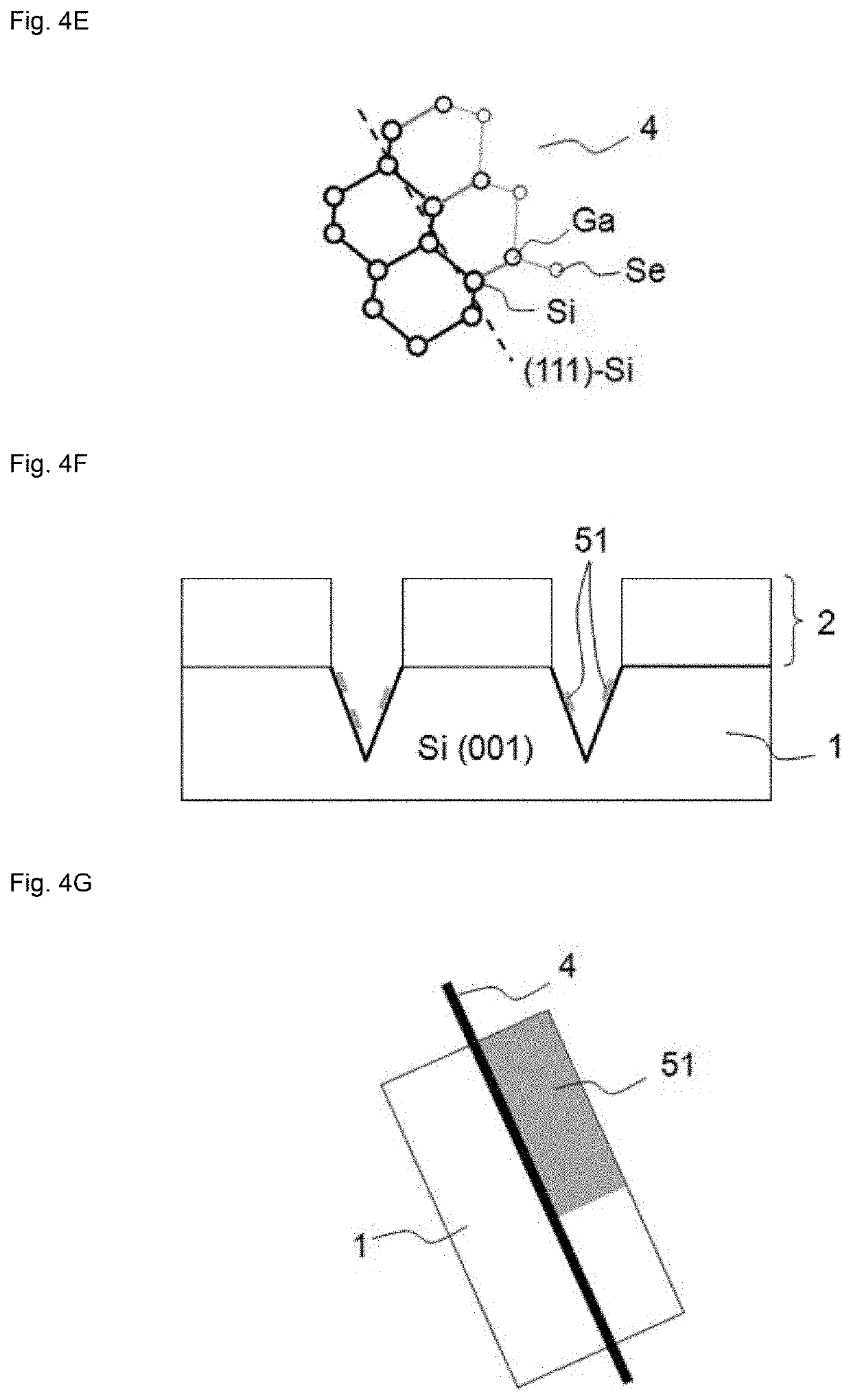Process for the hetero-integration of a semiconductor material of interest on a silicon substrate
- Summary
- Abstract
- Description
- Claims
- Application Information
AI Technical Summary
Benefits of technology
Problems solved by technology
Method used
Image
Examples
Embodiment Construction
[0085]FIGS. 1, 2A, 2B and 3 (prior art) have been described previously and will not be repeated here.
[0086]FIGS. 4A to 4N represent an example and variants of the hetero-integration process according to the invention. In this example, the starting silicon substrate 1 has a [001] crystal orientation and may thus be denoted as Si(001).
[0087]The process comprises a step of structuring the [001] oriented silicon substrate, which comprises a step of making a growth mask 2 on the surface of said substrate (FIG. 4A). The growth mask 2 comprises masking patterns 20. The growth mask is preferably made of a dielectric material, generally SiO2 or SiN, which shows selectivity towards etching relative to the silicon substrate. Two consecutive (or adjacent) masking patterns are separated from each other by a distance 1. This distance 1 corresponds in this example to the width of a trench 21. A trench corresponds to an area of the substrate 1 not masked with the dielectric material (or “exposed ar...
PUM
 Login to View More
Login to View More Abstract
Description
Claims
Application Information
 Login to View More
Login to View More - R&D
- Intellectual Property
- Life Sciences
- Materials
- Tech Scout
- Unparalleled Data Quality
- Higher Quality Content
- 60% Fewer Hallucinations
Browse by: Latest US Patents, China's latest patents, Technical Efficacy Thesaurus, Application Domain, Technology Topic, Popular Technical Reports.
© 2025 PatSnap. All rights reserved.Legal|Privacy policy|Modern Slavery Act Transparency Statement|Sitemap|About US| Contact US: help@patsnap.com



